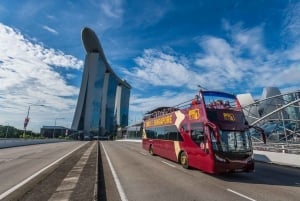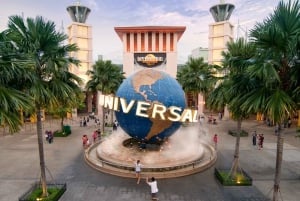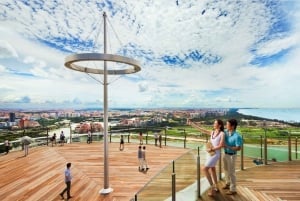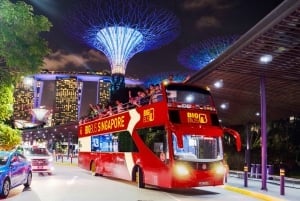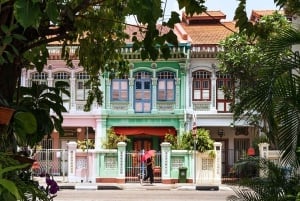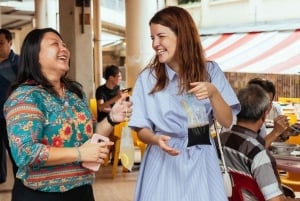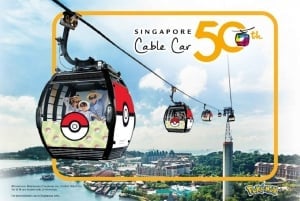Do's and Don'ts
Singapore is a tolerant country for the most part – at least in terms of cultural diversity. One thing is for sure: you won’t see a mob crowding around if you unwittingly break one of the local taboos. That is not to say that anything goes here, though. Before you start navigating your way around Singapore, it is best that you take a look at our list of Do’s and Don’ts.
Singapore's Do's
1) DO ask for the price before you order any foodâ¨. This is especially important in smaller places, and for items listed at seasonal price – prices can often be surprisingly high, despite the establishment’s humble appearance. This is particularly relevant when ordering seafood. Some fish or crab dishes can easily be priced in the hundreds, even at small coffee shops. It’s better to ask before you order, lest you fall off your chair when the bill arrives. You might save yourself some embarrassment, particularly since some smaller eateries do not accept payment other than in cash.
2) DO get a copy of the local MRT (Mass Rapid Transit, aka Metro, aka Subway) guide. â¨You can download the guide at www.smrt.com.sg or pick it up at any MRT station. MRT is the most popular and probably the most convenient mode of transportation in Singapore – especially during peak hours, when traffic jams are the order of the day. By studying the MRT guide, you will discover that many of the local tourist attractions are accessible by train, saving you quite a bit in the way of transportation expenses.
3) DO look out for packets of tissue paper or umbrellas on tables. â¨Before you sit down at a table in a hawker centre or coffee shop, check for packets of tissue paper or umbrellas. Singaporeans have a peculiar habit of reserving their seats with these items, while they queue up for food. If you don’t want to get into an ugly confrontation, best you steer clear. Especially true in crowded hawker centres during lunch time, when tables are prime real estate!
4) DO bargain. â¨Always bargain a little, especially when you’re not in a fixed-price outlet such as one of the larger chain stores. Don’t expect the sort of monumental savings you’d find in Bangkok or Taiwan, though. At best, sellers will reduce their prices by 10% or so; if you push your luck too far, you might end up offending. When shopping in places like Lucky Plaza or Sim Lim Tower, all bets are off – bargain away! Feel free to shop around, since many vendors sell the same items, and price disparities between shops will surprise you. Be forewarned, some shops have a reputation for overcharging – so be sure you ask around and get a feel of the market rate before zooming in for the kill.
5) DO dress appropriately. â¨It is hot and humid in Singapore, so we suggest you pack light cotton clothing. Don’t go to the other extreme, though. A large proportion of the Singaporean population is somewhat prudish; if you step into any religious building, a show of too much skin is not going to endear you to the inhabitants.
Here’s a list of DON’Ts in Singapore. Some of the list’s items may seem like simple common sense; we’ve highlighted them because of the potential for stiffer punitive actions here, compared to many other areas.
1) DON’T litter. â¨At any given time, there could be a National Environment Agency (NEA) officer nearby, dressed in plain clothes and mingling in the crowd. If you are a first offender, you will be slapped with a $120 fine (or thereabouts – even fines are subject to inflation). You will also be required to watch an educational video on the evils of littering. Repeat offenders can be forced to participate in a Corrective Work Order. As the name suggests, this is work done to clean up a mess, usually in a public area such as a park, all to teach you to appreciate the hard work that goes into keeping the environment clean and beautiful. So unless you want to ruin your vacation, just don’t litter.
2) DON’T vandalize. â¨This includes graffiti of any sort, no matter how artistic you might consider it. Singapore’s attitude toward vandalism is considerably stricter than in many other countries. Offenders may be jailed and even caned, as some recent incidents involving young foreigners have demonstrated.
3) DON’T feel obligated to tip. â¨It is not considered bad manners to tip, but doing so is simply not part of the culture here. It is definitely not like the West, where you’re often expected to tip, even if you aren’t impressed with the service received. In restaurants here, a service charge of 10% is levied on top of your purchases – it is simply included in your bill. It is not the norm to tip taxi drivers, and they do not expect it. Of course, you are still welcome to tip if you so desire.
4) DON’T stuff your wallet with cash.
This isn’t meant to say you need to be concerned about pickpocket-infested streets. It’s just that there is no real need to carry much cash. Most restaurants and larger stores accept Visa and MasterCard. If you wish to use American Express, Diners Club, JCB or UnionPay, it’s a good idea to ask in advance about whether your card will be accepted. (Most food and beverage outlets do honour American Express and Diners Club.) Even if you find your card won’t be accepted, in Singapore you are never far from a Cirrus or Plus ATM.
5) DON’T throw away your receiptsâ¨. This is a matter of potential savings. At the airport, before you depart, you may be able to reclaim Goods and Services Tax (GST) you’ve paid for certain items during your visit. The current GST rate is 7%, so the amount you’re entitled to reclaim can be substantial – especially if you’ve spent hours at Orchard Road.
We hope these tips will help you to an even more enjoyable stay in Singapore.


